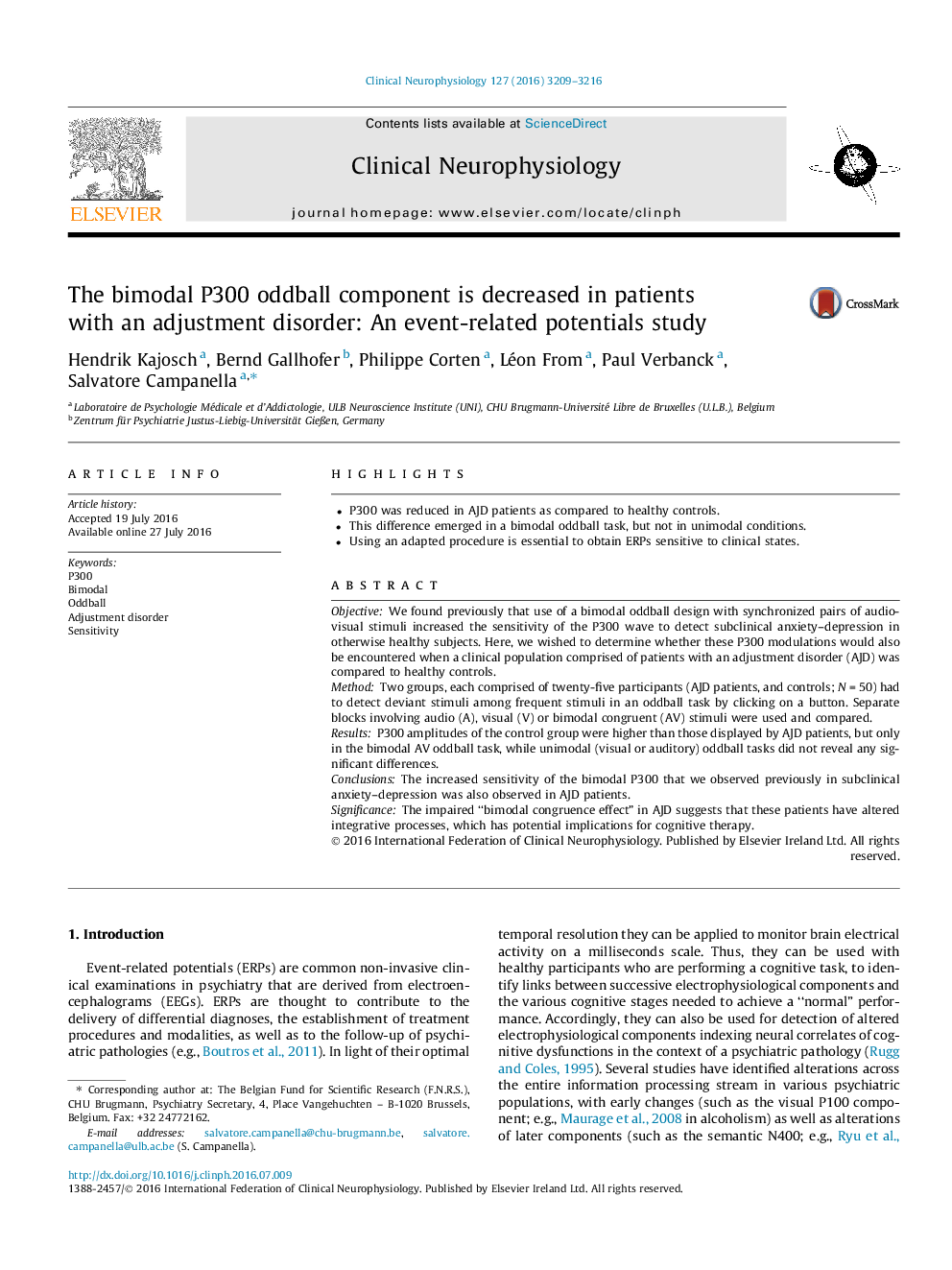| Article ID | Journal | Published Year | Pages | File Type |
|---|---|---|---|---|
| 5627873 | Clinical Neurophysiology | 2016 | 8 Pages |
â¢P300 was reduced in AJD patients as compared to healthy controls.â¢This difference emerged in a bimodal oddball task, but not in unimodal conditions.â¢Using an adapted procedure is essential to obtain ERPs sensitive to clinical states.
ObjectiveWe found previously that use of a bimodal oddball design with synchronized pairs of audio-visual stimuli increased the sensitivity of the P300 wave to detect subclinical anxiety-depression in otherwise healthy subjects. Here, we wished to determine whether these P300 modulations would also be encountered when a clinical population comprised of patients with an adjustment disorder (AJD) was compared to healthy controls.MethodTwo groups, each comprised of twenty-five participants (AJD patients, and controls; NÂ =Â 50) had to detect deviant stimuli among frequent stimuli in an oddball task by clicking on a button. Separate blocks involving audio (A), visual (V) or bimodal congruent (AV) stimuli were used and compared.ResultsP300 amplitudes of the control group were higher than those displayed by AJD patients, but only in the bimodal AV oddball task, while unimodal (visual or auditory) oddball tasks did not reveal any significant differences.ConclusionsThe increased sensitivity of the bimodal P300 that we observed previously in subclinical anxiety-depression was also observed in AJD patients.SignificanceThe impaired “bimodal congruence effect” in AJD suggests that these patients have altered integrative processes, which has potential implications for cognitive therapy.
